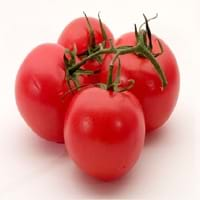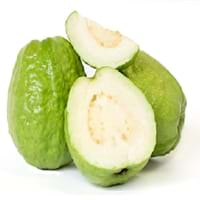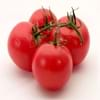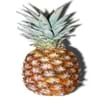Health Benefits
Anti depressant, Cancer prevention, Heart care, Muscle pain relief, Prevents constipation, Regulation of heart rate, Weight loss properties
Cancer prevention, Diarrhea treatment, Prevents constipation, Scurvy treatment, Treatment of dysentary
General Benefits
Controls blood pressure, Eye care, Maintains healthy cholesterol level, Strengthens bones
Controls blood pressure, Cures cough, Improves eye vision, Maintains healthy cholesterol level, Treatment of common cold
Skin Benefits
Anti-aging benefits, Heals sunburn, Skin rejuvenation, Treatment of acne, Treatment of skin diseases
Anti-aging benefits, Brightens and lightens complexion, Hydrates skin, Treatment of skin diseases
Hair Benefits
Good conditioner, Prevents hair loss, Softening mask
Prevents hair loss
Allergy Symptoms
Anaphylaxis, Coughing, Diarrhea, Eczema, Hives, Itching sensation in throat, Nausea, Skin Rashes, Runny nose, Sneezing, Swelling of mouth, tongue or lips, Vomiting, Wheezing
Breathing difficulty, Coughing, Runny nose, Sneezing, Swelling of mouth, tongue or lips, Wheezing
Side Effects
Heart burn
Hair thinning, Nail thinning, Skin problems, Tooth decay, Weakness, Possibly unsafe during pregnancy
Best Time to Eat
Along with meal, Don't consume at night and before bed, Morning time (before lunch)
As a snack in the late afternoon, Don't consume at night and before bed, Eat the fresh ones, avoid mixing with any other foods, don't eat after meal., Morning time (before lunch)
Vitamin B5 (Pantothenic Acid)
Vitamin C (Ascorbic Acid)
Vitamin K (Phyllochinone)
Phytosterol
Not Available
Calories in Fresh Fruit with Peel
Calories in Fresh Fruit without Peel
Not Available
Not Available
Calories in Frozen Form
Not Available
Type
Berry, Fruit vegetable
Tree fruit, Tropical
Season
All seasons
All seasons
Varieties
Better Boy, Early Girl, Beefsteak, Beefmaster, Pink Brandywinem, Caspian Pink, Thai Pinks, Hawaiian Pineapple, Kellogg’s Breakfast, Cherokee Purple, Black Ethiopian and Paul Robeson
Lucknow 49, Allahabad Safeda, Chittidar, Harijha, Apple guava, Hafshi, Arka Mridula and Allahabad Surkha
Color
Green, Orange, Pink, Purplish black, Red, White, Yellow
Green, Pink, Yellow
Taste
Sour, Sweet
Sweet-Sour
Origin
Central America, South America
Central America, Mexico, South America
Soil Type
Loam, Sandy loam
Loam, Rocky, Sandy
Climatic Conditions
Sunny, Warm
Sunny
Facts about
- Around 10,000 varieties of tomatoes are grown in the world.
- In Buñol, people celebrate the Tomatina festival where around 1.5 lakh tomatoes are used.
- As per Guinness book of records, heaviest tomato weighed 3.51 kg.
- The black pigment in Guava leaves is used for textile applications.
- Guava leaves are used to make tea.
- Oils extracted from guava seeds are used in various cosmetics.
- Guava wood is used for decorative purposes.
Other Countries
Brazil, Egypt, India, Iran, Italy, Mexico, Spain, Turkey, United States of America
China, Indonesia, Mexico, Nigeria, Pakistan, Philippines, Thailand
Top Importer
Nigeria
Canada
Top Exporter
Netherlands
India
Botanical Name
Solanum lycopersicum
Psidium guajava
Synonym
Lycopersicon esculentum
Not Available
Subkingdom
Tracheobionta
Tracheobionta
Division
Magnoliophyta
Magnoliophyta
Class
Magnoliopsida
Magnoliopsida
Subclass
Asteridae
Rosidae
Family
Solanaceae
Myrtaceae
Species
S. lycopersicum
Psidium guajava
Generic Group
Nightshade
Myrtle
Difference Between Tomato and Guava
We might think that Tomato and Guava are similar with respect to nutritional value and health benefits. But the nutrient content of both fruits is different. Tomato and Guava Facts such as their taste, shape, color, and size are also distinct. The difference between Tomato and Guava is explained here.
The amount of calories in 100 gm of fresh Tomato and Guava with peel is 18.00 kcal and 68.00 kcal and the amount of calories without peel is Not Available and Not Available respectively. Thus, Tomato and Guava belong to Low Calorie Fruits and Low Calorie Fruits category.These fruits might or might not differ with respect to their scientific classification. The order of Tomato and Guava is Solanales and Myrtales respectively. Tomato belongs to Solanaceae family and Guava belongs to Myrtaceae family. Tomato belongs to Solanum genus of S. lycopersicum species and Guava belongs to Psidium genus of Psidium guajava species. Beings plants, both fruits belong to Plantae Kingdom.









